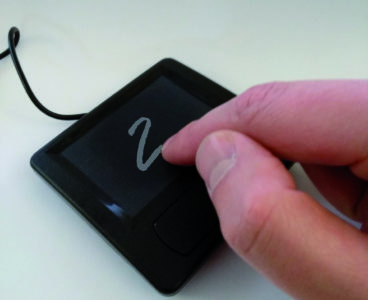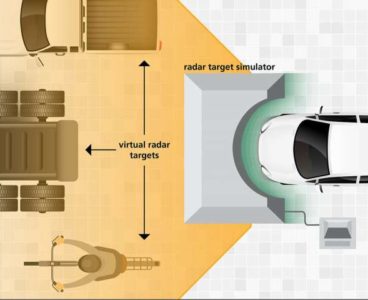Today microcontrollers can be found in almost any technical device, from washing machines to blood pressure meters and wearables. Researchers at the Fraunhofer Institute for Microelectronic Circuits and Systems IMS have developed AIfES, an artificial intelligence (AI) concept for microcontrollers and sensors that contains a completely configurable artificial neural network. AIfES is a platform-independent machine…
Virtual Tests For Autonomous Driving Systems
Sensors in autonomous vehicles have to be extremely reliable, since in the future motorists will no longer constantly monitor traffic while underway. In the past these sensors were subjected to arduous road tests. The new ATRIUM testing device from Fraunhofer Institute for High Frequency Physics and Radar Techniques FHR now makes it possible to move…
Pliable Micro-batteries Utilized for Wearables
There is a new technology gripping the markets of the future — technology to wear. Wearables, as they are known, are portable systems that contain sensors to collect measurement data from our bodies. Powering these sensors without wires calls for pliable batteries that can adapt to the specific material and deliver the power the system…
Robot Eye Can See Everywhere
Where am I? Like humans, robots also need to answer that question, while they tirelessly glue, weld or apply seals to workpieces. After all, the production of precision products depends on robot control systems knowing the location of the adhesive bonding head or welding head to the nearest millimeter at all times. This means the…
Lasers Etch Fishbone Patterns in Engines to Conserve Fuel
Dresden Fraunhofer engineers are working on reducing the fuel consumption of cars by more than a tenth. They use ultra-short laser pulses to generate very fine and friction-reducing fishbone patterns in engines. Dr. Udo Klotzbach from the Fraunhofer Institute for Material and Beam Technology (IWS) in Dresden estimates that if selected individual parts in combustion…
Quantum Mechanical Effects Deciphered by Electron Spectrometer
Our vision is limited to the macroscopic world. If we look at an object, we merely see its surface. At the nanoscale, things would appear very different. This is a world of atoms, electrons and electron bands, in which the laws of quantum mechanics hold sway. Investigating these tiniest building blocks of matter more closely…
Atom-Sized Sensor Inspects Hard Drives
To connect components with each other, gluing is preferred today instead of welding, riveting, or using screws. That makes cars, planes, and agricultural machines lighter. The requirements placed on the adhesive are high, though: it has to be flexible enough to compensate for stress peaks in the joint zone while still providing a rigid connection…
Battery Charges in Seconds, Lasts Up to 12 Years
Imagine you’ve had a hectic day and then, to cap it all, you find that the battery of your electric vehicle is virtually empty. This means you’ll have to take a long break while it charges fully. It’s a completely different story with capacitors, which charge in seconds. However, they have a different drawback: they…
Watching Computers Think
Sorting photos on the computer used to be a tedious job. Today, you simply click on face recognition and instantly get a selection of photos of your daughter or son. Computers have gotten very good at analyzing large volumes of data and searching for certain structures, such as faces in images. This is made possible…
Graphene Production Reaches Critical Milestone
The Fraunhofer Institute for Organic Electronics, Electron Beam and Plasma Technology FEP from Dresden, together with partners, has succeeded for the first time in producing OLED electrodes from graphene. The electrodes have an area of 2 × 1 square centimeters. “This was a real breakthrough in research and integration of extremely demanding materials,” says FEP’s…





